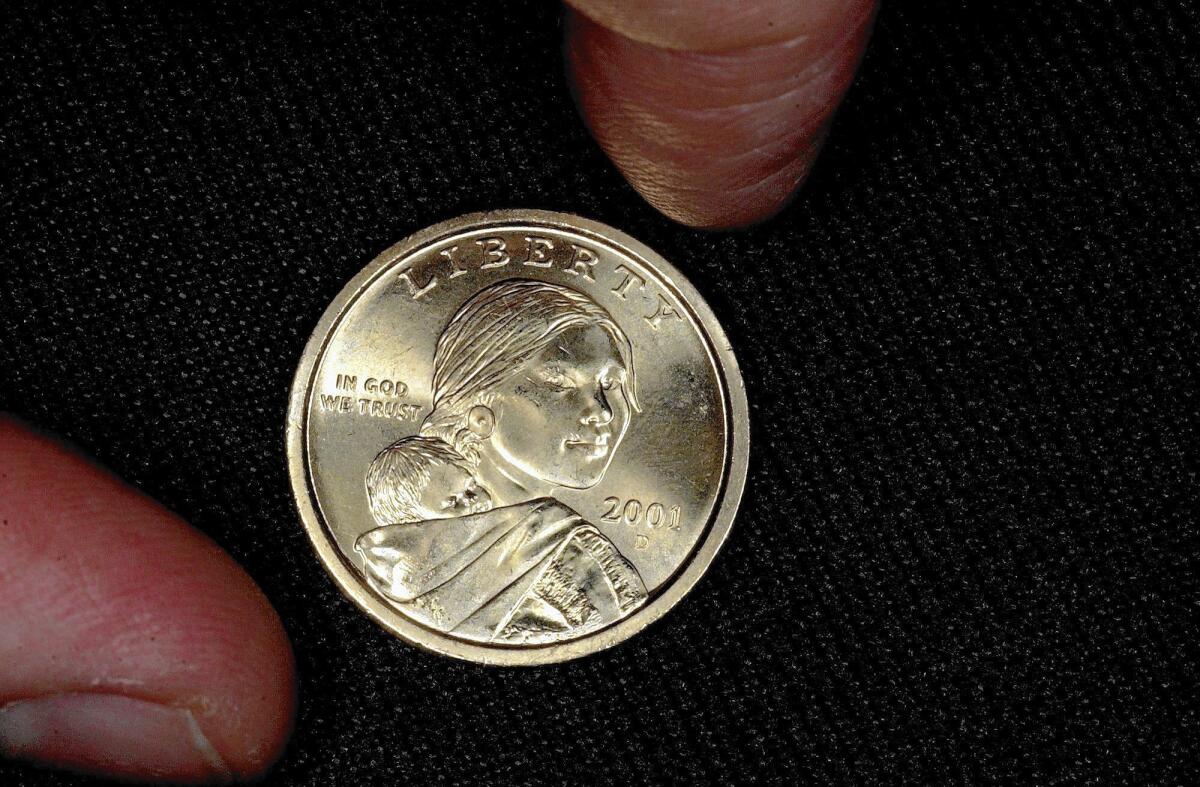The Harriet Tubman $20 and other faces on money show how we want to remember history

- Share via
Shortly after the assassination of President John F. Kennedy, a grieving nation bombarded U.S. officials with requests to create a coin in his memory.
Within a month, a law was enacted allowing the Mint to expedite the half dollar’s redesign; it was needed because currency is generally required to stay the same for at least 25 years. By March 1964, 26 million Kennedy half dollars were sent out for circulation.
“The Kennedy assassination was a traumatic shock,” said Rebecca Spang, a history professor at Indiana University Bloomington. “People felt we had to do something right away. [The coins] really were commemorative, used to remember.”
From the start, images on coins and paper money have been used to make social and political statements. The latest example came last week when Treasury Secretary Jacob J. Lew announced that Harriet Tubman would be the new face of the $20 bill, marking the first time in more than a century that a woman would appear on the front of a bill.
The back of the $10 bill will also be revamped, to include images of prominent leaders of the suffrage movement, while the reverse of the $5 bill will feature civil rights leaders. The bills’ final concept designs are set to be unveiled in 2020, the 100th anniversary of the 19th Amendment, which granted women the right to vote.
“Money isn’t just money,” said Bill Maurer, dean of social sciences at UC Irvine and a professor of anthropology. “Money is also a ubiquitous mass medium, so if you want to get any kind of message across in a big way, putting it on the money is a great way to do it.”
Indeed, you can track the changing American psyche in part through the nation’s money.
In the 18th and 19th centuries, U.S. currency featured depictions of allegorical figures such as Lady Liberty, which leaders hoped would send an ideological message about the country’s values.
See more of our top stories on Facebook >>
Some of that sentiment carried over into the 20th century. In the late 1970s, women’s suffrage leader Susan B. Anthony was chosen as the face of the silver dollar, making her the first woman to appear on a U.S. coin. The decision had received endorsements from groups including the Daughters of the American Revolution and the National Organization for Women, reflecting the rising profile of the women’s rights movement.
Decades later, Shoshone guide Sacagawea was selected for the front of the gold dollar coin in a nod to the inclusion of Native Americans and women on the nation’s currency.
Some argued to keep Liberty on the dollar coin instead of these real-life historical figures, said Doug Mudd, curator of the American Numismatic Assn. Money Museum in Colorado Springs, Colo. Regardless of political views, Liberty was seen as a “unifying principle,” he said.
The emphasis on national values also played into the inclusion of “In God We Trust” on U.S. currency. The motto first appeared on U.S. coins during the Civil War, when there was increased religious sentiment, and it was incorporated on paper notes in 1957 after President Dwight D. Eisenhower signed a law requiring the inscription to appear on all coins and bills.
That addition to paper bills coincided with the Cold War and was meant to show the distinction between communism and U.S. democracy, according to the U.S. House of Representatives history website. Rep. Charles Bennett of Florida, who sponsored the legislation, had hoped the motto would remind Americans of their spiritual faith.
Coins have always been used to commemorate significant national events.
Washington became the face of the quarter in 1932 on the 200th anniversary of his birth. President Franklin D. Roosevelt first appeared on the dime in 1946, the year after his death, an appropriate placement for the founder of what would become the March of Dimes Foundation. And the Apollo 11 moon landing was recognized on the back of the Eisenhower silver dollar in 1971.
Many critics felt the long-standing dominance of pre-Civil War statesmen on bills was due for a shake-up. The revised $20, $10 and $5 bills will use the theme of democracy to illustrate the battle for inclusion by various groups.
“Most reputable U.S. history courses would no longer tell you that it’s because of a few great men that this country became what it is,” said Spang of Indiana University. “People would tell you about the importance of social movements, of cultural transformation.”
Twitter: @smasunaga
ALSO
Four consequences of a $15 minimum wage
Why ‘rankism’ harms the workplace and how to address it
Gannett offers to buy Tribune Publishing in $815-million deal
More to Read
Inside the business of entertainment
The Wide Shot brings you news, analysis and insights on everything from streaming wars to production — and what it all means for the future.
You may occasionally receive promotional content from the Los Angeles Times.











